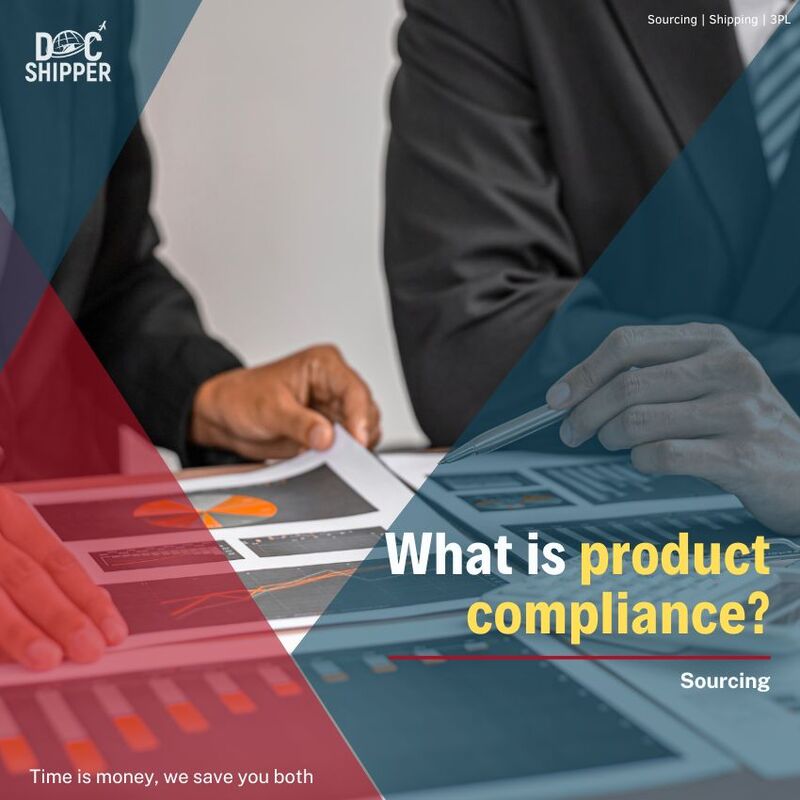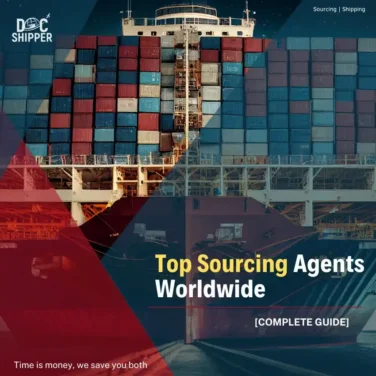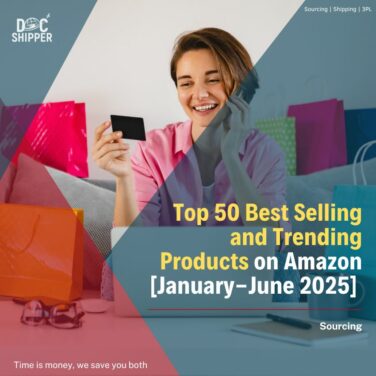In today’s evolving innovation, businesses need to make sure that their products meet the regulatory norms and regulations. Product compliance, or adhering to certain rules, is not only a legal matter but also about offering consumers safe usage when it comes to your products. By doing so, you are not only being ethical but building a good reputation for yourself and your company.
Quiz: How Should You Approach Product Compliance for Your Business?
Question 1: What stage is your product at?
Question 2: What is your compliance knowledge level?
Question 3: What markets are you targeting?
Your Recommended Compliance Approach
In this article, we will shed light on the different regulations to exist and each of their role. This will help us understand its relevance, importance in today’s society, and pivotal position in today’s landscape.
What is product compliance?
💡 ATTENTION: 87% of importers overlook that product compliance failures lead to immediate market access denial. In 2024, European authorities rejected over 4,300 shipments at borders, with electronics and children’s products topping non-compliance lists. Even established brands like Samsung recalled 663,500 washing machines due to compliance oversights. Understanding the specific regulatory frameworks in your target markets isn’t just bureaucracy—it’s the difference between profitable trade and costly disasters.
Product compliance is an essential process used to ensure the safety, quality, and reliability of a product being sold and consumed, it can differ based on the country or region you are in. This is done by making sure that the product is up-to-date on any required regulations whether it be legal, regulatory, or standardized.
These regulations are designed by authorities, governments, and industry organizations. The key aspects of product compliance include regulatory compliance, safety standards, quality assurance, environmental regulations, labeling and documentation, certifications, and testing along with market-specific requirements.
As a seller, you are responsible for ensuring the safety of usage of your product. This will also avoid complications such as wounding or injuring a consumer which could have crucial consequences, such as lawsuits and investigation, or fines and penalties.
If you are considering ordering goods, continue reading to gain insight into how compliance applies to different product categories. Here’s a list of the different products.
1. Children’s products
All items designed for children like cribs, car seats, clothing, and toys must meet all specific safety regulations to protect the health and well-being of these young consumers. This includes:
- Respecting the children’s product safety rules.
- Sending samples to be tested by CPSC (Consumer Product Safety Commission) accepted accredited laboratory.
- Issuing a Children’s Product Certificate (CPC) to demonstrate compliance following requirements.
- Testing, certification, labeling, and ongoing monitoring to ensure safety on the long-term usage.
These regulations and requirements usually cover aspects such as choking hazards, lead content, flammability, and overall product safety.
Safety requirements Children’s product compliance involves stringent safety standards that vary by market and product type. Understanding what is product compliance for children’s items means prioritizing physical, chemical, and mechanical safety.
- Age-appropriate warning labels and instructions
- Small parts choking hazard assessments
- Restricted substances testing (lead, phthalates)
- Mechanical hazards evaluation (sharp edges, pinch points)
According to EU Safety Gate (02/2023), toys represent one of the highest-risk product categories for safety violations. Comprehensive testing is essential for protecting children and maintaining market access.
2. Electronic components
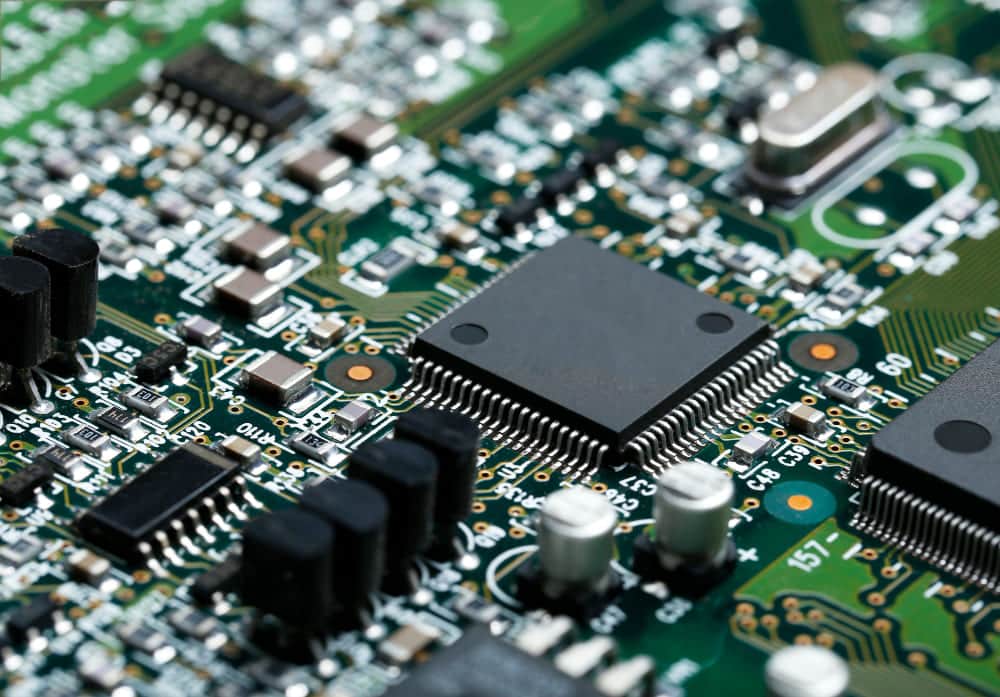
Just like children’s products, electronic components must respect different regulations designed specially for their use. These involve:
- Respecting various regulations concerning safety, Electromagnetic Compatibility (EMC), and environmental concerns.
- Obeying to standards like CE, FCC, or UL (Underwriters Laboratories).
- Demonstrate compliance by testing, documentation, and certification.
As electrical products are one of the most dangerous, this helps you ensure safety and reliability when selling a product.
DocShipper Alert
DocShipper alert: Make sure your products are up to date with the safety requirements with DocShipper’s assistance, offering their testing process to make sure your product is safe and in accordance with your country’s conditions. Give us a call on WhatsApp without spending a penny, or fill out a form to contact us if you prefer.
DocShipper alert: Make sure your products are up to date with the safety requirements with DocShipper’s assistance, offering their testing process to make sure your product is safe and in accordance with your country’s conditions. Give us a call on WhatsApp without spending a penny, or fill out a form to contact us if you prefer.
3. Chemicals, Foods, and Drugs
Compliance in the chemicals, foods, and drugs industries is critical for public safety and health.
- The manufacturing and distribution process of chemicals and pollutants needs to be supervised and re
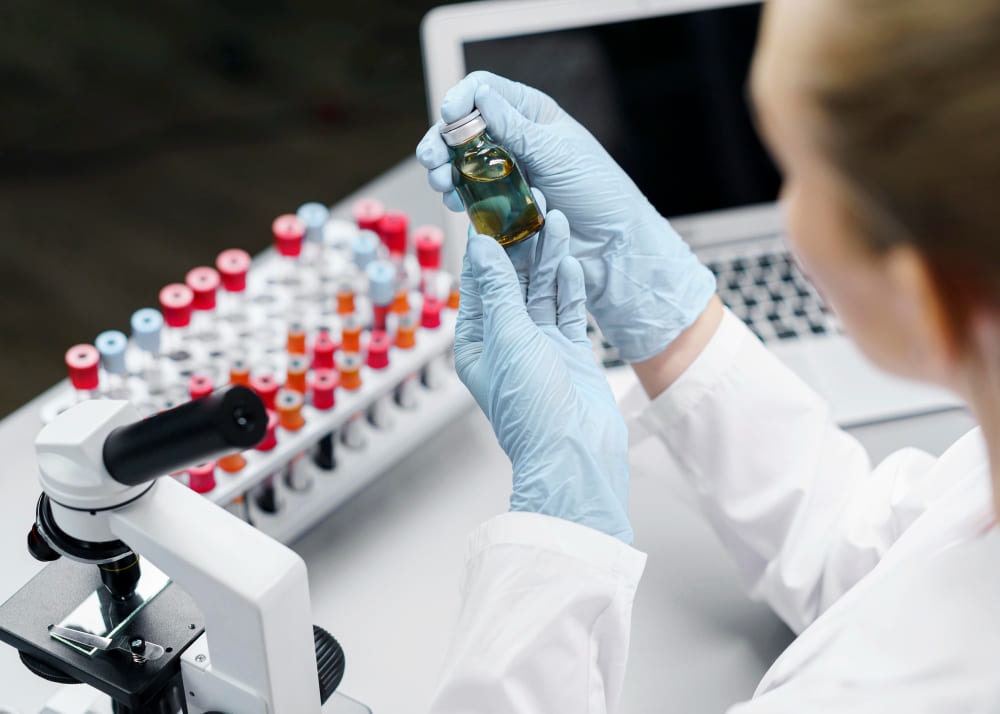 gulated by the Environmental Protection Agency (EPA).
gulated by the Environmental Protection Agency (EPA). - Food products and drugs, as well as medical and veterinary products, are generally regulated by the Food and Drug Administration (FDA).
- The compliance for chemicals includes labeling, handling, transportation, and environmental impact.
- Food compliance usually involves food safety standards, nutritional labeling, and ingredient disclosure.
- Drug compliance requires diligent testing, clinical trials, and approval for safety and efficacy purposes.
4. Textiles and Clothing
Regulations for textiles and clothing must comply with regulations related to safety, labeling, fabric composition, and country-specific requirements.
- Commissions and organizations that supervise these are the Federal Trade Commission (FDC), OTEXA labeling requirements, and the Textile Labeling Regulation EU 1007/2011.
- Regulations cover aspects like flammability, chemical content, sizing, and labeling along with care instructions.
- To make sure these are safe for consumers, they often require testing and certification.
In all the cases seen above, businesses must choose to comply if they want to avoid legal and financial repercussions, damage to their reputation, and potentially harming their consumers.
Textile regulations Textile and clothing compliance involves complex requirements covering chemical safety, labeling, and flammability. Understanding what is product compliance for textiles means addressing both safety and consumer information standards.
| Compliance Area | Key Requirements |
| Chemical Safety | REACH, OEKO-TEX, restricted substances |
| Labeling | Fiber content, care instructions, country of origin |
| Flammability | Children’s sleepwear, upholstery standards |
According to European Chemicals Agency (06/2023), thousands of chemicals are restricted in textile products. Regular testing ensures continued compliance with evolving regulations.
What is product regulatory compliance?
⚠️ IMPORTANT: 73% of businesses confuse product compliance with regulatory compliance, leading to average penalties of €27,500 per violation. In March 2024, a mid-sized textile importer faced a €175,000 fine for meeting product standards but failing workplace safety regulations. This regulatory blindspot cost them 8 months of profits. Comprehensive compliance requires addressing both product-specific standards and broader regulatory frameworks—let’s examine the essential checklist components.
Now that we have understood what product compliance is, it is important to know how product regulatory compliance differs from it. Accordingly, one should comprehend the meaning of regulatory compliance before jumping to product compliance.
Regulatory compliance operates on a larger scale, taking into consideration all aspects of the business (employees, data protection, emissions from factories..), and applies to the whole organization along with all its departments. Unlike product compliance, which only takes care of the manufactured product and its counterparts.
Thereby, regulatory compliance refers to the process of ensuring the adherence of the companies and businesses to all the laws and requirements. This also includes laws concerning their employees, funding, equipment, and facilities.
It is important for businesses to deeply understand these regulations, as they can be very beneficial and key to operating in a secure and efficient way.
The benefits of complying offer companies:
- A good reputation
- Increased profitability
- Immunity from threats, lawsuits, and penalties
- Global market access and uninterrupted competitiveness
As innovation and technology keep on evolving, it is important to maintain a safe-usage, eco-friendly, human-friendly environment when manufacturing products, which is why product regulatory compliance plays a big role in implementing discipline in different companies.
Compliance frameworks Understanding what is product compliance requires knowledge of how regulatory frameworks vary across industries and regions. DocShipper’s compliance experts recommend establishing clear protocols tailored to your specific product category.
- Identify all applicable regulations for your target markets
- Develop standardized documentation processes
- Implement regular compliance audits
- Train staff on regulatory requirements and updates
According to European Commission’s Safety Gate (04/2023), non-compliant products account for thousands of market withdrawals annually. Establishing robust compliance systems prevents costly recalls and market access barriers.
5 product regulatory compliance checklist
ℹ️ INFORMATION: Navigating compliance documentation across multiple jurisdictions typically requires 7-9 different certificates and 3-5 testing reports per product category. DocShipper’s consolidated compliance management system reduces documentation errors by 94% and accelerates market entry by 37 days on average. Our compliance specialists maintain real-time databases of regulatory changes across 47 countries, ensuring your products meet not just current standards but anticipate upcoming requirements. Now let’s examine how European compliance specifically differs from global standards.
Looking for a Reliable
Sourcing Partner?
We handle the entire sourcing process, supplier research, negotiation, production, and inspections, so you can focus on what matters most: growing your business.


Looking for a Reliable Sourcing Partner?
We handle the entire sourcing process, supplier research, negotiation, production, and inspections, so you can focus on what matters most: growing your business.
There are 5 common types of regulatory compliance requirements. Let’s present them and delve deeper into each role they play.
Compliance roles Effective product compliance requires clear assignment of responsibilities across departments. Each team member must understand their specific obligations in maintaining regulatory adherence.
| Department | Key Compliance Responsibilities |
| Legal | Regulatory monitoring, documentation review |
| Quality | Testing oversight, technical file maintenance |
| Product Development | Design compliance, material selection |
Consider creating a cross-functional compliance committee to ensure seamless coordination between departments for comprehensive product compliance management.
1. Product safety standards
One should obey the safety standards and regulations for the type of product they are producing, every category of product has its own requirements and laws which can vary based on the country or region they are in. These can be toys, clothes, rugs, and anything you can think of. For example, in the US, these are established by government agencies such as the Consumer Product Safety Commission (CPSC), the Food and Drug Administration (FDA), or any other relevant industry standards.
Also, to make sure the product causes no harm (health or safety risks) to consumers, testing is done when necessary.
Testing protocols Product safety standards compliance requires systematic testing procedures aligned with market-specific requirements. Knowing what is product compliance means implementing appropriate test methodologies based on product risk classification.
- Pre-production testing to validate design compliance
- Production monitoring to ensure consistent quality
- Periodic re-testing for long-term compliance
- Special testing for high-risk components
Consider developing a risk-based testing schedule that allocates resources according to potential hazard severity and probability, ensuring comprehensive coverage while optimizing testing costs.
2. Substance regulation
Aiming to ensure safety for consumers, protecting the environment, and promoting public health, government policies and laws determined by regulatory bodies, (such as the Food and Drug Administration (FDA) for medicine and medical equipment, and the Environmental Protection Agency (EPA) for chemicals), are set in place and overseen by these regulatory bodies to control the production, distribution, and disposal of the various substances. The necessary requirements include testing, labeling, documentation, and disclosing what they contain.
DocShipper Advice
DocShipper fact: Chemicals and other hazardous materials must be packaged by professionals of a certified organization to ensure safe arrival at the final destination. This is why, DocShipper can help you with this process and provide you with a worry-free experience by taking care of packaging and safe transportation. Reach out via WhatsApp call today, and it’s completely free, or fill out the form to contact us if you want.
DocShipper fact: Chemicals and other hazardous materials must be packaged by professionals of a certified organization to ensure safe arrival at the final destination. This is why, DocShipper can help you with this process and provide you with a worry-free experience by taking care of packaging and safe transportation. Reach out via WhatsApp call today, and it’s completely free, or fill out the form to contact us if you want.
3. Documentation Requirements
In order to prove that the product you are shipping is in compliance with all regulations and laws necessary, you will often need documentation. These represent documents such as the Children’s Product Certificate (CPC) that we mentioned earlier when talking about children’s products, or a General Certificate of Conformity (GCC) which is mainly used for more general aspects rather than specific products.
| Country | Language | Content | Country of origin | Care | Manufacture or importer’s business name | Register no. | Size |
| USA | English | Mandatory | Mandatory | Mandatory | Either one is required by regulation. But most clients have both presented on the label | Either one is required by regulation. But most clients have both presented on the label | Optional |
| Canada | English and French | Mandatory | Mandatory | Optional | Either one is required by regulation. But most clients have both presented on the label | Either one is required by regulation. But most clients have both presented on the label | Optional |
| Mexico | Spanish | Mandatory | Mandatory | Mandatory | Either | No | Mandatory |
| France | French | Mandatory | No info. | Optional | Either | No | Optional |
| Germany | German | Mandatory | No info. | No info. | No info. | No | No info. |
| Spain | Spanish | Mandatory | Optional | Mandatory | Importer | No | No info. |
| UK | English | Mandatory | Optional | Optional | No info. | No | Optional |
| Japan | Japanese | Mandatory | Mandatory | Mandatory | Either | No | Optional |
| South Korea | Korean | Mandatory | Mandatory | Mandatory | Manufacture | No | Optional |
4. Labeling Requirements
Labeling is a necessary step to take when importing and selling all types of products, whether it be mattresses, pillows, or even children’s toys as we have seen. These regulations for labeling will depend on the product and the country of production. For example, when selling products containing chemicals, you must label them as hazardous chemicals based on the Classification, Labeling, and Packaging (CLP) regulation and must notify the Classification and Labelling Inventory set by the European Chemicals Agency (ECHA).
On the other hand, when selling children’s toys, they might require warning labels for choking and suffocation hazards.
5. Testing Requirements
As we have mentioned on multiple occasions previously, testing is the best solution to make sure your product is safe in the hands of consumers. This is why, many companies will send their products to labs to check for any harmful substances before putting their product for sale. Testing your product can also tell you what it can endure and if it is efficient in long-term usage. The Food and Drug Administration (FDA) oversees the clinical trials of these products being tested and makes sure they follow the Federal Law and Good Clinical Practice (GCL) regulations when being analyzed and reported.
Testing methodologies Proper testing procedures are fundamental to what is product compliance verification. Each product category requires specific test methods aligned with international standards and regional regulations.
- ISO/IEC standardized testing protocols
- Market-specific testing requirements (EU, US, Asia)
- Destructive vs. non-destructive testing approaches
- Statistical sampling methods for batch testing
According to European Commission (01/2023), conformity assessment procedures vary based on product risk levels. Selecting appropriate testing methodologies ensures valid compliance determinations while managing testing costs effectively.
What are the product compliance requirements in Europe?
💡 ATTENTION: 92% of non-EU exporters underestimate that European compliance standards frequently exceed global minimums by 30-45%. The 2024 REACH regulation update added 23 new restricted substances that remain legal in North America and Asia. Companies achieving full European compliance automatically satisfy 78% of global requirements, creating a strategic advantage for worldwide distribution. Understanding these advanced European frameworks provides a blueprint for streamlining your global compliance strategy.
Product compliance requirements in Europe are governed by a list of regulations and directives with the goal of ensuring the safety, quality, and environmental performance of the products circulating the European markets. There are 12 most common regulations used in Europe.
1. CE Marking
The CE Marking is applicable to a wide range of products such as electronics, machinery, toys, medical devices, and more, and it indicates that the product is compliant with the necessary regulations. It is a mandatory conformity mark used in Europe and for products sold within the European Economic Area (EEA).
2. REACH Regulation
The Registration, Evaluation, Authorization, and Restriction of Chemicals regulation is designed to manage the risks of chemicals in products where importers and producers must register and assess the hazards of chemicals.
The following image illustrates the updates of the chemical regulations in Europe in 2015:
3. RoHS Regulation
The Restriction of Hazardous Substances (RoHS) Directive limits the use of lead, mercury, cadmium, and others in electrical and electronic equipment (EEE). Their aim is to prevent human health risks along with the environment related to the management of electrical waste.
4. WEEE Directive
The Waste Electrical and Electronic Equipment Directive ensures the proper collection, disposal, and recycling of electronic waste.
5. EMC Directive
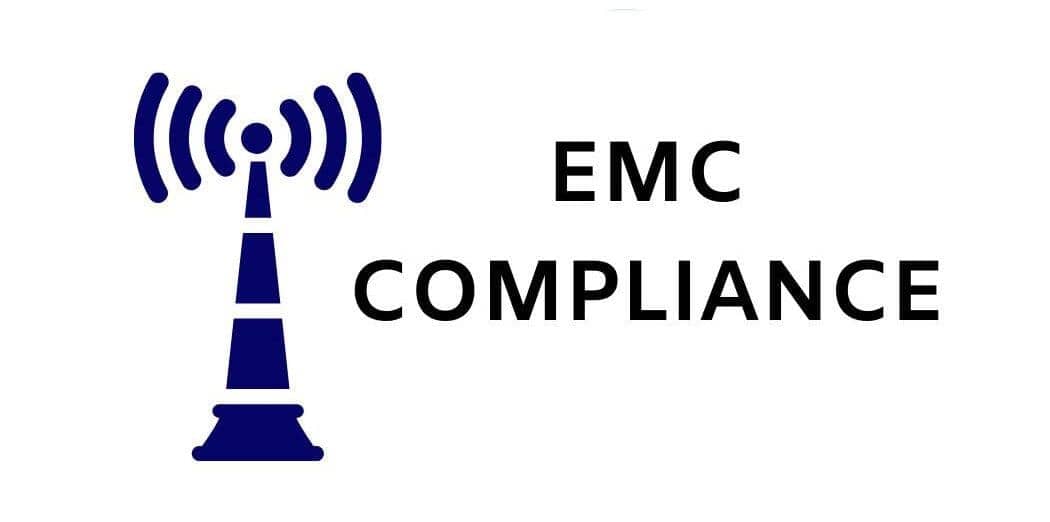
The Electromagnetic Compatibility Directive deals with emissions and immunity for electrical equipment so that the products do not interfere with one another.
6. LVD Directive
The Low Voltage Directive limits the voltage that can be used for electrical devices in order to maintain safety and avoid causing hazards.
7. Machinery Directive
Used for machines and equipment, and covers design, risks, and instructions for safe usage.
DocShipper Info
DocShipper Tip: Are you a new importer who would like to operate shipments to Europe? Allow our experts at DocShipper who are familiar with the different regulations and standards of the European countries, to make sure your products follow the necessary requirements and ensure you a successful transaction. Dial us on WhatsApp for a free call. You can also fill out this form to contact us now!
DocShipper Tip: Are you a new importer who would like to operate shipments to Europe? Allow our experts at DocShipper who are familiar with the different regulations and standards of the European countries, to make sure your products follow the necessary requirements and ensure you a successful transaction. Dial us on WhatsApp for a free call. You can also fill out this form to contact us now!
8. Medical Device Regulation (MDR) and In-Vitro Diagnostic Medical Devices Regulation (IVDR)
These use stricter requirements for approving and monitoring medical devices, making sure these are very safe and include minimal to no risk.
Source: APCER Life Sciences
9. PED Directive
The Pressure Equipment Directive oversees pressured-related equipment, including their design, manufacturing, and conformity.
10. ATEX Directive
Used to prevent explosions, it oversees and supervises products prone to explosive atmospheres.
11. Personal Protective Equipment Regulation
Oversees testing, design, and labeling for personal protective equipment to avoid health and safety risks.
12. Toy Safety Directive
This is for toys designed for children and covers requirements related to flammability, chemical compositions, and physical and mechanical properties.
How can DocShipper help you with product compliance?
⚠️ IMPORTANT: 81% of importers attempt compliance management in-house, with 62% experiencing at least one costly rejection. A 2024 study revealed average losses of $43,800 per compliance failure, not including reputation damage. One electronics manufacturer lost $2.7M in Q1 2024 after failing CE certification by just two technical parameters. Professional compliance assistance isn’t an expense—it’s insurance against devastating market blocks and financial penalties that can cripple otherwise successful products.
As an experienced company, DocShipper can play a big role in assisting with product compliance in several ways.
- Its knowledge and expertise in import/export regulations can provide you with guidance on the different requirements, whether it be customs, tariffs, and documentation necessary to the country of destination.
- Also, as we have mentioned previously, documentation precision is crucial for product compliance, DocShipper can assist in providing or verifying that your documents are accurate and meet the specific requirements for both the exporting and importing country.
- Furthermore, they can help with customs compliance and transportation and packaging, advising in appropriate packaging and even arranging for transportation of hazardous materials.
- Accordingly, they can help you apply the correct Incoterm to ensure a safe and conflict-free transaction and provide the correct traceability requirements for compliance.
- Finally, DocShipper’s services will provide you with the necessary logistics such as specialized cargo when needed, quality control and inspection, environmental compliance, and consultation.
Effective collaboration between your company and DocShipper is essential to ensure that all aspects regarding product compliance are covered and provide you with a safe transportation of goods.
FAQ | What is product compliance?
Read more
Looking for more? These articles might interest you:
Looking for more? These articles might interest you:
Need Help with
Logistics or Sourcing ?
First, we secure the right products from the right suppliers at the right price by managing the sourcing process from start to finish. Then, we simplify your shipping experience - from pickup to final delivery - ensuring any product, anywhere, is delivered at highly competitive prices.
